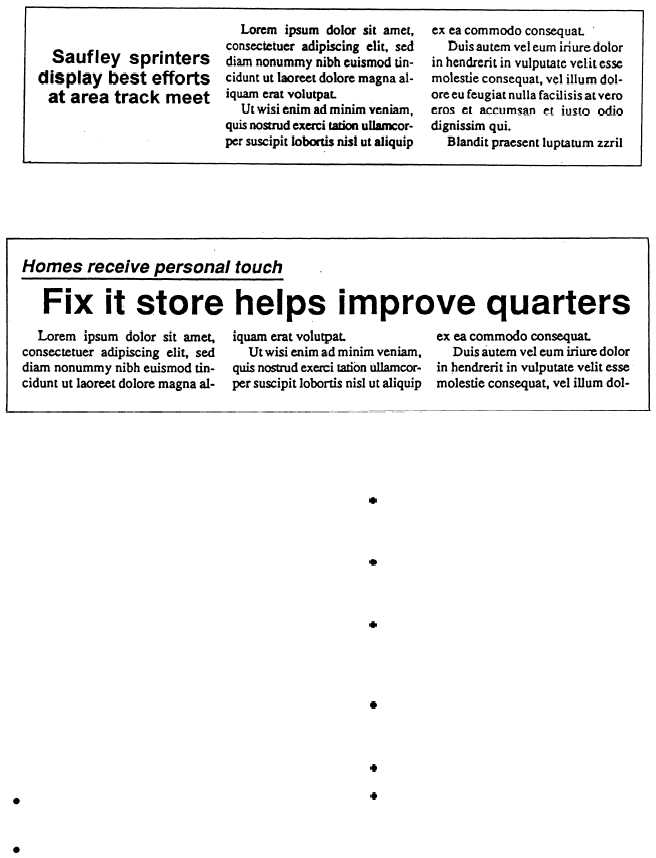Figure 9-5.—Side head.
Figure 9-6.—Kicker.
SIDE HEAD
The side head (fig. 9-5) is a headline form that runs
alongside a story. It is normally three or four lines and
looks best when set flush right. A side head is usually
placed slightly above the center of the story.
KICKER
The kicker (fig. 9-6) opens up the area on a page
where the headline is located. It can be used to introduce
a feature article with a pun line above the main head
The following are some basic rules for you to follow
when writing kickers:
Extract kicker information from the bridge or the
body of the story.
Do not repeat words in the kicker and main head.
Interpretation of the main head should not
depend on information in the kicker.
l
l
l
l
l
l
Make the kicker 1/2 the point size of the main
head. For example, a 36-point main head will
have an 18-point kicker.
Set the kicker 1/3 to 1/2 the width of the main
head. For example, a three-column main head
requires a one-column to 1 1/2-column kicker.
Alternate type postures to give the head the
proper emphasis. For instance, a reman style
main head requires an italic kicker and vice
versa.
Indent the main head two counts (headline unit
counting will be explained later) under the kicker.
to add white space.
Always underline the kicker.
Do not use a kicker at the top of a page.
HEADLINE VARIANTS
LEARNING OBJECTIVE: Recognize the most
common variations of standard headlines.
9-4


